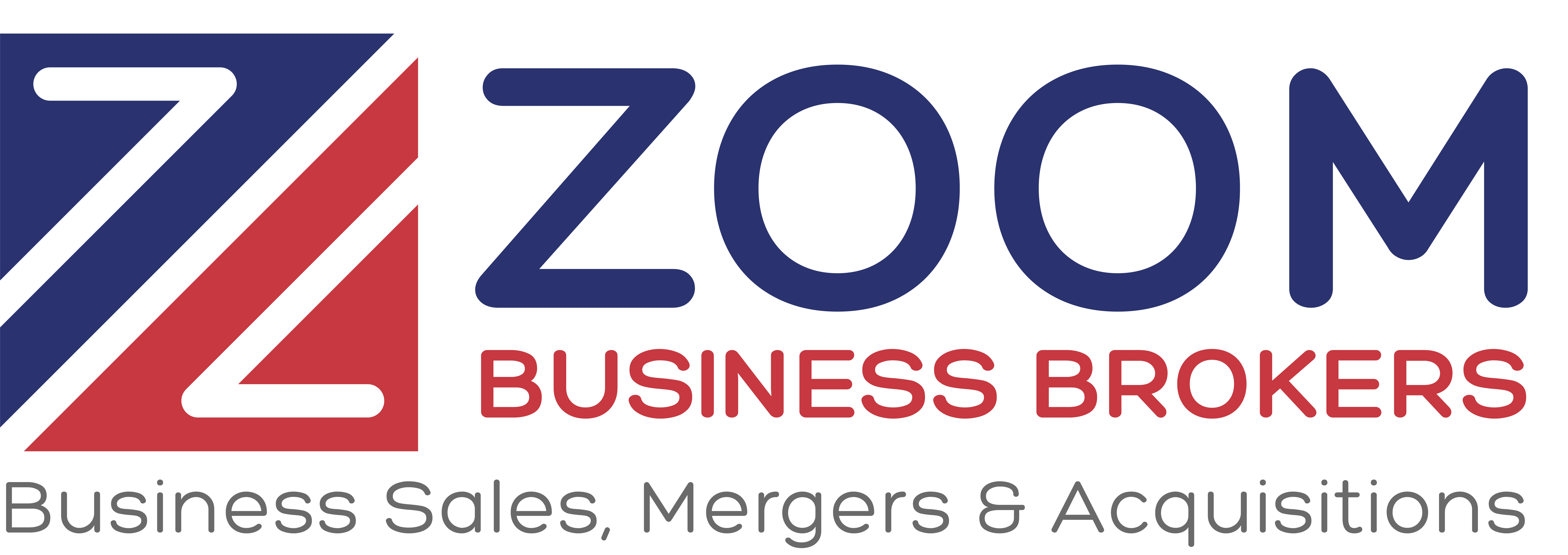
How Does Your Business Compare?

The value of a business is not strictly about its financial performance or the price someone is willing to pay for it. Numerous intangible factors, or value drivers, influence its worth. The evaluation of these drivers provides insight into the business’s potential for future growth and profitability, which are key considerations for potential buyers. This article aims to delve into some of these key value drivers, using a table to better illustrate their significance in the process of selling a business.
- Business Type: The demand for your business type significantly impacts its valuation. Businesses in high-demand sectors naturally command higher selling prices due to their appeal to a larger pool of potential buyers. Conversely, those in sectors with little demand may face challenges in attracting buyers, ultimately leading to a lower selling price. To improve this, consider diversifying or pivoting your offerings to align with high-demand sectors.
- Business Growth: High and steady business growth is a strong value driver. It signifies the company’s ability to grow its revenue and profitability over time. Steady growth is appealing to buyers as it suggests a high potential for future profitability. Conversely, low or inconsistent growth can devalue a business. To enhance growth, focus on effective business strategies, like market expansion and product innovation.
- Market Share: Businesses with a large and growing market share are seen as leaders in their sectors, making them attractive to buyers. Small or static market shares can limit a company’s attractiveness. To improve market share, consider investing in marketing and sales strategies that broaden your customer base and increase your competitive edge.
- Profits: Good, steady profits are one of the most straightforward indicators of a business’s health. They signal a successful business model and strong future potential. On the other hand, unsteady profits suggest instability and risk, decreasing the business’s appeal to buyers. Enhancing profitability may involve cost reductions, price adjustments, or efforts to boost sales.
- Management: An above-average management team adds value to a business by showcasing effective leadership and the potential for sustained growth. Understaffed or mediocre teams may devalue the business due to perceived inefficiencies or instability. Enhancing this value driver might mean investing in employee development, hiring key personnel, or improving management processes.
- Financials: Audited financials demonstrate a company’s commitment to transparency and accuracy, thus increasing buyer trust. Compiled or reviewed financials, although useful, may not inspire the same level of confidence. To improve this aspect, consider obtaining regular audits and maintaining meticulous financial records.
- Customer Base: A wide and growing customer base signifies market acceptance and the potential for stable future revenue. A fluctuating or narrow customer base may suggest instability or a limited market, decreasing business value. To grow your customer base, prioritize customer satisfaction, quality service, and effective marketing strategies.
- Litigation: A business with no litigation history in recent years is typically seen as less risky, adding to its value. On the contrary, regular litigation can decrease a business’s appeal due to potential legal costs and reputation damage. To maintain a clean litigation record, comply with legal requirements and manage disputes effectively.
- Sales: Good sales growth signifies a strong market presence and potential for future profits. No growth or low growth can decrease a business’s value. To enhance sales growth, invest in effective sales strategies and customer engagement.
- Industry Trend: Businesses operating in industries experiencing growth tend to attract higher valuations due to their future potential. If your industry is experiencing stagnant growth, this may negatively impact your business’s value. Staying on top of industry trends and adapting your business model to suit can help drive up your business’s value.
In conclusion, several factors or value drivers influence the selling price of a business. By understanding these drivers and strategically enhancing them, business owners can optimize their exit strategy and potentially maximize their selling price.

How Does Your Business Compare?
The art of selling a business extends beyond just financial figures; it incorporates various value drivers, key attributes or factors that can increase a business’s value and appeal to prospective buyers. Understanding these drivers, evaluating how your business measures up, and actively working to enhance your performance in these areas can significantly influence your business’s value and saleability.
- Business Type: The demand level for your business type is crucial. High demand equates to more potential buyers and a higher perceived value. Conversely, little demand can diminish your business’s attractiveness. If your business operates in a low-demand sector, consider diversifying your products or services to align with market trends and demands.
- Business Growth: A business demonstrating high and steady growth signals potential for further expansion, making it attractive to buyers seeking future profitability. Businesses with low growth can be seen as stagnant or riskier investments. Bolstering business growth can involve strategic initiatives, such as market expansion, diversification, and innovation.
- Market Share: Large and growing market share can indicate a strong competitive position, adding to your business’s appeal. Conversely, a small or stagnant market share may imply fierce competition or lack of differentiation. To increase market share, companies can focus on developing unique selling propositions, effective marketing strategies, and robust customer relationships.
- Profits: Profitability is an immediate attraction for buyers. Businesses with good, steady profits indicate a successful operational model and predictability, an aspect many buyers value. Unsteady profits can signify business instability. To stabilize and increase profits, businesses should analyze their revenue streams, cost structures, and pricing strategies for improvement opportunities.
- Management: An above-average, well-staffed management team can enhance a business’s value, suggesting effective leadership and operational efficiency. Understaffed management can give the impression of instability or poor organizational health. To improve this value driver, businesses may need to hire key personnel, develop existing staff, or optimize their organizational structure.
- Financials: Audited financials are a strong value driver, as they imply accuracy, transparency, and good governance. Conversely, merely compiled financials might raise doubts about the business’s financial practices. To improve this driver, businesses can invest in regular audits and uphold meticulous financial record-keeping.
- Customer Base: A wide, steadily growing customer base is a positive indicator of market acceptance and future revenue potential. In contrast, a non-steady customer base may hint at customer churn or market instability. To improve this driver, businesses should prioritize customer satisfaction and retention strategies, alongside efforts to attract new customers.
- Litigation: Businesses with no recent litigation history are seen as less risky, enhancing their appeal. Frequent litigation, on the other hand, could signal potential legal issues and associated costs, diminishing the business’s value. Keeping a clean litigation record involves adhering to all relevant laws, maintaining strong supplier relationships, and managing disputes effectively.
- Sales: Demonstrating good sales growth can reflect positively on a business’s market presence and revenue potential. Businesses with no or little sales growth may be seen as lacking momentum. To increase sales, companies can focus on enhancing their sales strategies, refining their product or service offerings, and improving customer relationships.
- Industry Trend: Operating in an industry experiencing good growth can increase a business’s attractiveness, as it suggests potential for future expansion and profitability. Businesses in industries with merely okay growth may be seen as less attractive. To ride on positive industry trends, businesses need to stay abreast of market developments and adapt their strategies accordingly.
In sum, the value drivers outlined above contribute significantly to a business’s overall appeal and potential sale price. As part of your exit strategy, recognizing and optimizing these drivers can make your business more desirable to prospective buyers, potentially leading to a higher sale price and a more successful business transition. Always remember to not just compare your business to others in general, but consider your direct competition and industry-specific standards. This nuanced understanding will better prepare you for the process of selling your business.
Read More
Deciphering Business Valuations: Navigating the Challenges

Valuing a business is an intricate process steeped in complexity. Often subject to the judgment of the assessor, it assumes that the provided information is accurate, posing unique challenges. This article explores the key challenges inherent in business valuations and offers insights into handling these hurdles effectively.
1. Navigating the Dilemma of Product Diversity
Firms offering a single product or service can often be more vulnerable than their multiproduct counterparts. The inherent risk is the potential change in market preference or disruptive elements affecting the product’s viability. Hence, companies are encouraged to explore product diversity to distribute risk and ensure a robust valuation.
2. Mitigating the Risks of Customer Concentration
Many small businesses rely heavily on a handful of major clients or customers. The loss of a key client can significantly impact the firm’s revenue and profitability, thereby affecting its valuation. Businesses can manage this risk by broadening their customer base, ensuring a stable flow of revenue, and improving their business valuation.
3. Unraveling the Value of Intangible Assets
Intangible assets like patents, trademarks, and copyrights often form a crucial part of a business’s value. However, the challenge lies in quantifying these assets accurately, given their intangible nature. Regardless, these assets can add significant value to a business, making it attractive to potential buyers, enhancing its overall valuation.
4. Contending with the Reliance on Critical Supply Sources
A company depending solely on a single supplier may secure a competitive edge due to cost-efficiency. However, this advantage could become a liability if the supplier’s situation changes, especially for international suppliers, where the risk of supply chain disruption is higher. To circumvent this risk, businesses should diversify their supply sources, ensuring operational continuity and a more robust business valuation.
5. Understanding the Implications of ESOP Ownership
Companies partially or fully owned by employees (ESOPs) can face unique valuation challenges. As ESOP-owned firms require an employee vote for significant decisions such as company sale, this can affect marketability and consequently, valuation. Therefore, it’s crucial for ESOP businesses to factor in this aspect and effectively communicate with their employee-owners when planning a sale.
6. Accounting for the Company/Industry Life Cycle
A business’s life cycle and industry trends significantly impact its valuation. Companies operating in declining industries may find their valuations adversely affected. Businesses should remain adaptive and innovative, ensuring they are not left behind in industry shifts and maintaining their value appeal.
7. Dealing with Additional Value Impactors
Several other factors can influence business valuation. These include outdated or unsalable inventory, reliance on short-term contracts, work-in-progress, and the need for third-party or franchise approvals for company sale. Recognizing and managing these factors can prevent unwelcome surprises during the valuation process.
In conclusion, business valuation is a multifaceted process, shaped by a multitude of factors beyond mere financials. By understanding these challenging elements and effectively managing them, businesses can secure an accurate valuation, paving the way for a successful sale. Understanding these issues isn’t just good practice—it’s an essential part of maximizing your business’s value and ensuring its ongoing success.
Read More
The Power of Growth Rate: Differentiating Value in Similar Businesses

In the world of business, it’s not uncommon to come across two companies in nearly identical industries, each boasting similar EBITDA figures. However, their valuations can differ significantly. Let’s consider two hypothetical companies, both with an EBITDA of $6 million, yet one is valued at $30 million (5x EBITDA) while the other fetches a price tag of $42 million (7x EBITDA). The question that arises here is, why such a stark difference in their valuations?
The discrepancy in valuations might tempt one to turn to the typical factors, such as:
- The Market
- Management/Employees
- Uniqueness/Proprietary
- Systems/Controls
- Revenue Size
- Profitability
- Regional/Global Distribution
- Capital Equipment Requirements
- Intangibles (brand/patents/etc.)
While all these factors play a role in the valuation of a company, one key element sits at the end of the checklist that plays an oversized role: the Growth Rate. This value driver is paramount and often becomes the key consideration for prospective buyers when evaluating a business’s worth.
Let’s delve into our hypothetical scenario a bit deeper. The company valued at 7x EBITDA boasts a remarkable growth rate of 50 percent, while its counterpart, valued at 5x EBITDA, shows a modest growth rate of 12 percent. This difference in growth rate can be a game-changer, significantly impacting the valuation multiples.
However, to comprehend the real growth narrative, it’s crucial to address certain pertinent questions:
- Are the company’s growth projections credible?
- Where is the growth originating from?
- What products or services are driving the growth?
- Where and why are customers supporting the projected growth coming from?
- Are there long-term contracts in place?
- How reliable are these contracts or orders?
These questions help buyers and sellers alike to unravel the true story behind a company’s growth rate, allowing them to evaluate the potential for future expansion. It’s not just about the current growth rate but also the sustainability and quality of this growth.
For instance, growth propelled by a diverse customer base, innovative products, or services, and a strong market position can be more sustainable and thus more valuable. On the other hand, growth reliant on a few major contracts or a limited customer segment might entail more risk, potentially reducing the company’s valuation.
Moreover, the credibility of growth projections is also paramount. Buyers tend to prefer businesses with reliable, well-documented growth projections backed by robust strategic plans.
To conclude, while many factors contribute to a company’s value, the growth rate often holds the key to unlocking its true worth. It is not the sole determinant but often becomes a decisive factor differentiating two similar companies. Understanding this can enable businesses to plan better, optimize their growth strategies, and maximize their value in the marketplace. So remember, when it comes to business valuation, the growth rate often dictates the tale of the tape!
Read MoreThree Basic Factors of Earnings
Two businesses for sale could report the same numeric value for “earnings” and yet be far from equal. Three factors of earnings are listed below that tell more about the earnings than just the number.
1. Quality of earnings
Quality of earnings measures whether the earnings are padded with a lot of “add backs” or one-time events, such as a sale of real estate, resulting in an earnings figure which does not accurately reflect the true earning power of the company’s operations. It is not unusual for companies to have “some” non-recurring expenses every year, whether for a new roof on the plant, a hefty lawsuit, a write-down of inventory, etc. Beware of the business appraiser that restructures the earnings without “any” allowances for extraordinary items.
2. Sustainability of earnings after the acquisition
The key question a buyer often considers is whether he or she is acquiring a company at the apex of its business cycle or if the earnings will continue to grow at the previous rate.
3. Verification of information
The concern for the buyer is whether the information is accurate, timely, and relatively unbiased. Has the company allowed for possible product returns or allowed for uncollectable receivables? Is the seller above-board, or are there skeletons in the closet?
